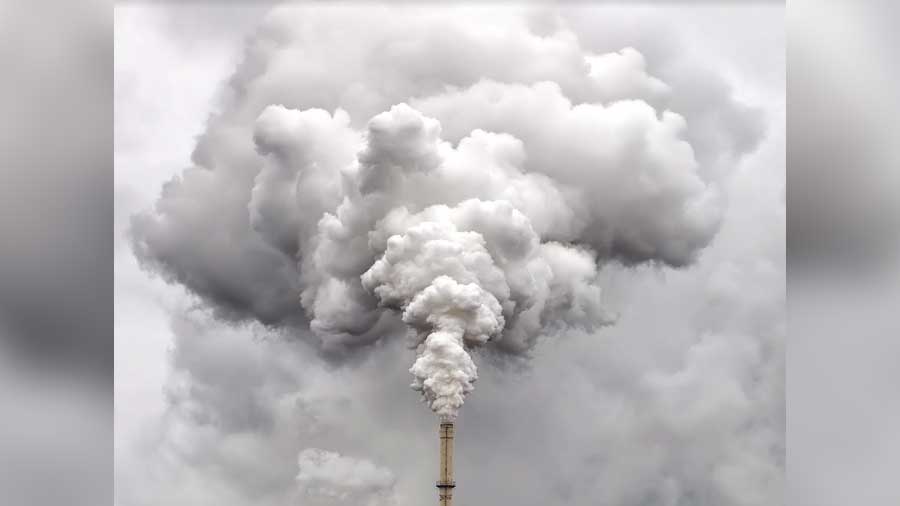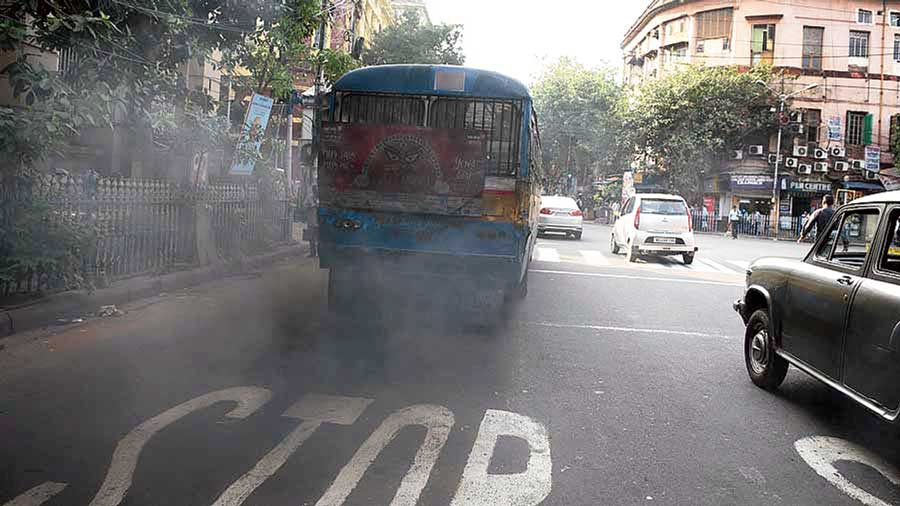The PM 2.5 pollution in Bangladesh has reached worrying levels during the pandemic, amid fears that the air quality in the neighbouring country is worsening the air quality in Bengal.
The level of PM 2.5, the most toxic ultrafine particulate, in Bangladesh is nearly seven times the limit permitted by WHO, according to a recent survey carried out by the Centre for Atmospheric Pollution Studies (CAPS), a unit of Stamford University Bangladesh.
The PM 2.5 pollution level was found to be maximum in Dhaka and neighbouring cities like Gazipur and Narayanganj. The average value was nearly 17 times the WHO limit and more than four times the Bangladeshi permissible limit of 65 micrograms per cubic metre of air.
The study was conducted between January and July last year — which included the second wave of Covid in Bangladesh — when polluting activities such as vehicular movement and construction were lower than usual.
Kalyan Rurdra, chairman, West Bengal Pollution Control Board, had said recently that about 21 per cent of Bengal’s PM 2.5 pollution comes from Bangladesh, citing a study by IIT Delhi.

A congested thoroughfare in Kolkata. A key researcher involved with the Bangladesh study, however, said Bangladesh does not contribute significantly to Bengal’s air pollution File image
A key researcher involved with the Bangladesh study, however, said Bangladesh does not contribute significantly to Bengal’s air pollution.
India, Pakistan and Bangladesh are the three most polluted countries in the world when it comes to PM 2.5 pollution. The minuscule particulates can penetrate and lodge deep in the respiratory system and trigger a bevy of respiratory, cardiac and other diseases, including fatal cancers.
The study, carried out in all 64 districts of Bangladesh, found that the average PM 2.5 level in the country between January and July 2021 was 102.4 microgram, about seven times higher than the WHO-specified safe day limit of 15 microgram and about 1.6 times above the Bangladeshi day limit of 65 micrograms.
The pollution level could have been far worse in the absence of Covid curbs in Bangladesh at that time. “Out of the 64 districts studied, Gazipur had the worst average PM 2.5 pollution of 263.45 microgram, while Dhaka was the second worst with 252.9 microgram, followed by Narayanganj with 222.45 microgram. All three are located close to one another,” said professor Ahmed Kamrujjaman Majumder, the head of environment science at Stamford University and the project lead.
At some places, the PM 2.5 level was around 500 micrograms, more than 30 times the WHO limit and seven times the Bangladesh benchmark.
“Constant digging of roads and construction, emissions from about 1200 brick kilns around the cities and pollution from a few thousand medium and large industries as well as unfit vehicles and burning of garbage, are the main reasons behind the high air pollution in the top three cities in Bangladesh,” explained Majumder.

The construction of a Metro rail system, believed to be one of the major triggers of particulate pollution, started in Dhaka in 2016. iStock
“A development-pollution correlation emerges in the study. We found that the PM 2.5 surge mainly started in 2016, around the time when several developmental projects, particularly ones involving major construction, started in Dhaka and other parts of Bangladesh,” said Majumdar.
The construction of a Metro rail system, believed to be one of the major triggers of particulate pollution, started in Dhaka in 2016.
“The air pollution has spread all over Bangladesh with Dhaka being the central point, leading to high impact on the exposed population,” said Shorif Jamil, general secretary of the Bangladesh Paribesh Andolan.
“There is no doubt that the spate of developmental activities, particularly building of physical infrastructure, has contributed to the rise in air pollution in Dhaka despite several government efforts to contain the spread,” said Qazi Kholiquzzaman Ahmad, an economist and the chairman of the Dhaka School of Economics.
“Our research shows that neither Bangladesh receives a substantial amount of pollution from India, nor India from Bangladesh,” said Majumder. According to him, the pollution in Bangladesh is mostly local in origin.
Anumita Roy Choudhury, an air pollution expert from the Centre for Science and Environment (CSE) in India, pointed out that it's high time that regional air-shade should be looked into for tracking and taking action against air pollution.

